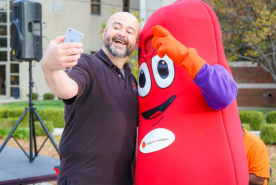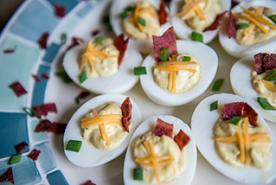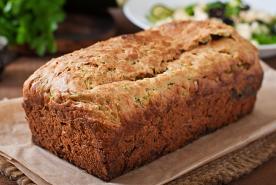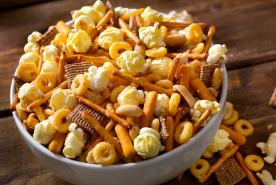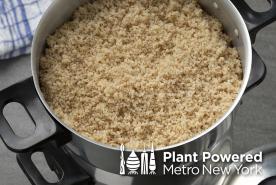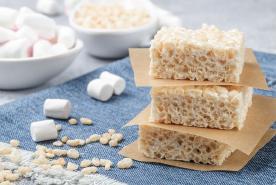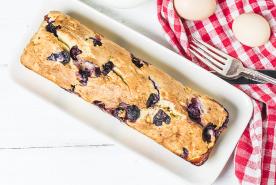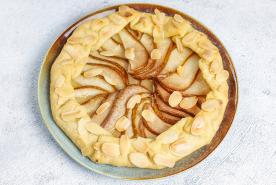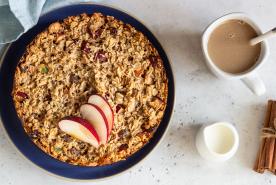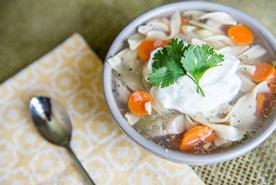Enjoy a healthier holiday meal with lower sodium. Make dishes from scratch, choose fresh meats, use low-sodium ingredients, and watch your portions.
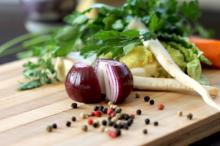 By Katelyn Engel MPH, RD, Program Manager
By Katelyn Engel MPH, RD, Program ManagerThe holidays are here! Many of us our busy attending parties and events, which means eating holiday food. For those of us trying to follow a low sodium diet for our kidneys, this can mean trouble. A typical holiday meal can easily give you a day’s worth of sodium. But don’t despair, here are some easy tips and substitutions to help you cut the sodium during the holidays.
Note: If you are on dialysis, the recommended foods may not fit with your potassium or phosphorus restrictions. Talk with your dialysis dietitian about what other changes you should make to have a healthy holiday meal, and still have good lab work.
Make it from scratch
You probably already know that most packaged/prepared foods contain a TON of sodium. Make it from scratch and you can usually cut that number in half. There are so many great cookbooks and recipes out there to help you along. Some recommended cookbooks can be found here.
Looking for a gift for the kidney patient in your life? Cooking classes are offered at many locations in Minnesota, through stores, cooking schools, and even local community education programs. Learning a few basic skills makes cooking much easier and more fun!
Fresh meat!
Most people are aware their holiday ham is high in sodium, but did you also know that your turkey or chicken may be injected with salt water as well? This is done to help "plump" the meat to make it look larger and more appealing. Many people also use a brine, soaking their meat in a salt water mixture before cooking to help it retain moisture. Others may use salt rubs or salty seasonings. All of this is adding extra sodium to your main dish.
When you purchase your holiday meat, talk with your local butcher or someone at the meat counter at your local grocery store about which options have the least added sodium or salt water. And when you cook your turkey, skip the brine and use a dry rub that is salt free.
Switch your soup base
Many of our favorite holiday foods are made using condensed soups, broths or bouillon. And as most of us know, these are loaded with sodium. Food companies have started to make some positive changes, with many offering low-sodium broths or soups. There's one catch though, low-sodium products often replace sodium with potassium chloride. If you have kidney disease, especially kidney failure, added potassium can be a problem. ALWAYS read your labels on low sodium products to look for potassium chloride, and avoid these products if you’re on a potassium restricted diet.
So, what's a person to do? The good news is a few companies make salt-free or unsalted soup stock or broth. These products aren't made with potassium chloride, and are still low in sodium. They usually offer a good flavor, and work great for making soups, stews, stuffing, or gravy.
Choose your cheese wisely
Like butter, cheese is a pretty common ingredient in our holiday foods. Cheesy potatoes, casseroles, and appetizers are filling up many of our plates. Most cheeses contain salt, but some cheeses contain a lot more than others. The best choices are swiss and ricotta, which both have less than 50mg per ounce. Others that are lower are soft goat cheese, brie, natural cheddar and cream cheese. These all have 180mg per ounce or less. The key here is per OUNCE (about the size of a pair of dice), so if your recipe serves 4 and calls for a package of cream cheese, you can bet it's not that low in sodium.
Watch out with baked goods
Many people don't realize this, but the baking soda or baking powder we use to get our cakes and cookies to rise also has a lot of sodium in it. One teaspoon of baking powder contains almost 500mg of sodium, and baking soda can be more than twice that at 1200mg per teaspoon. True, you (hopefully) won't eat that all yourself, but it adds up, especially in baked goods that also call for salt or nuts. Baking powder is the better choice, and even better is to use a low sodium baking powder. Dialysis note: Another product where the low sodium version will contain a lot of phosphorus and potassium. Talk with your dietitian about which product will be best for you.
These are just a few changes you can make to lower your sodium intake. We'd love to hear other tips and tricks you have, connect with us on Facebook or send us an email with your ideas (Katelyn.engel@kidney.org)
Wishing you a happy and HEALTHY holiday season!

